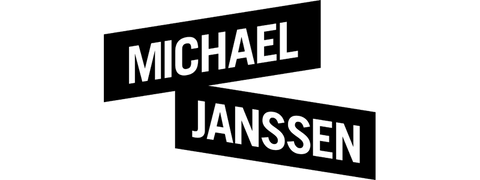Till Gerhard - Falsches Erwachen
19 January – 24 March 2018
Galerie Michael Janssen is delighted to present the third solo exhibition by artist Till Gerhard entitled Falsches Erwachen (False Awakening), a new cycle of large- and medium-format paintings from 2016-2017. In his earlier work, Gerhard largely deals with the fantastic and the uncanny, which he conveys via motifsembedded and borrowed from popular culture. In like fashion, his new paintings are informed by dreams and the unconscious, as well as by pantheistic folk and nature mythologies. The late-Romantic writings of the Irish poet William Butler Yeats (who was, in turn, influenced by Celtic mysticism and traditional English poetry, such as that of William Blake) also provide rich source material for Gerhard’s imagery. Here again, the artist takes a detour through popular culture to chance upon Yeat’s 1899 poem “The Song of Wandering Aengus”* in the guise of Donovan’s 1971 musical version of the original text. The title of the exhibition, Falsches Erwachen, describes a shifting dream state, during which a sleeper transitions from one dream into another but believes to have awaken at the onset of the second. Under such circumstances, many people believe they are indeed awake, and as a result, they are unaware of remaining within a dream. This occurrence is often interpreted as a sort of “defense strategy” by the unconscious mind against the lucidity of the dreamer.***
With his new paintings, Gerhard reveals an “alternate dimension,” as he did in his previous work. However, the streamer-decorated party zones of esoteric happenings are now replaced by the interior space of the unconscious—the singular and astonishing self. Yet, the pictorial space created by the painter still lies beyond the rational and possesses a mysterious and mystical quality. Many of his figures have their backs turned to the viewer, thereby signaling the border between an inside and outside world; or they are faceless, thus becoming a projection surface generated by and for dreamers. Gerhard's imagery oscillates between the figurative and the abstract, although the abstract elements in his new works are bolder and strongly emphasized. Furthermore, his color palette appears more intensely hued; and through which he aligns himself to models of Nordic painting, such as Edward Munch, and to the postimpressionism and expressionism of Paul Gauguin. The increasingly ambiguous fusion between humans and nature; dreams and the presumed reality of wakefulness; mysticism and unconsciousness; the figurative and the abstract; and paint and its substrate provides another essential element of abstraction to the content, and, on a painterly level, to its form.
Till Gerhard (b. 1971, Hamburg) studied at the Muthesius University of Fine Arts and Design, Kiel and at the Hamburg University of Applied Sciences (HAW) Department of Design. His work has been included in exhibitions at the Kunsthalle Hamburg and at the CA2M in Madrid, among others. Gerhard is also represented in many national and international collections, including the Colección Jumex (Mexico City), the Falckenberg Collection (Hamburg), Coleccion Inelcom (Madrid), Richard Prince (New York), and the Hort Family Collection (New York) “Last night’s dream: an island, in fog, in a lake. The landscape might be in Canada or Scotland. Vastness and emptiness. A large lake. I have a task there to finish together with J., I assist him... it has something to do with a large tree trunk. We land on a shallow, pebbly beach in a sort of canoe. It is necessary to drag the trunk to the shore. It is somewhat overgrown with ivy. Perhaps it is a type of log boat. I take photographs, the light has a magical quality, the sun shines through the fog. Halos from backlighting, the fog breaks apart, here and there blue spots of the sky are visible. Light, drizzling rain falls. Rainbow weather. There are also several fishermen present in a sort of camp. I remember awful outdoor clothes with absurd camouflage patterns. Blending with nature.
Yesterday: I read a poem by W.B. Yeats, which is about an island: the Lake Isle of Innisfree. It deals with Yeat’s childhood dream of living on this island like Thoreau in his cabin, long ago on Walden Pond. With a beehive. As he walked along London’s Fleet Street, filled with homesickness, a childhood memory of the island suddenly arose, from which the poem originated. In actuality, I was searching for the poem, “The Song of the Wandering Aengus” by Yeats. Aengus, a figure from Irish Celtic mythology, is the son of Dagda and the river goddess Boann. His attributes are love, youthfulness, and poetic inspiration. Singing birds always whirl about his head, and he is on an endless quest for his beloved.”
Quotes Till Gerhard, 2017
* Donavan: Celia Of The Seals / The Song Of The Wandering Aengus Label: Epic – 5-10694, 7“, 45 RPM, 1971
**https://www.klartraum-wiki.de/wiki/Falsches_Erwachen




